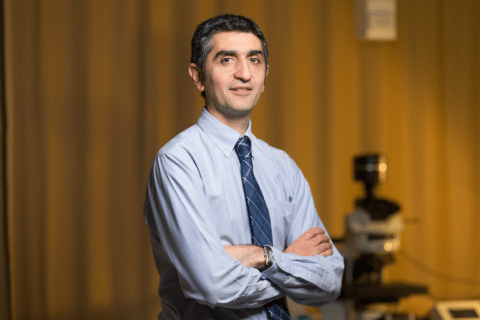
Associate Professor Kiarash Khosrotehrani
Diamantina Institute
- 13:30
- Monash University, Clayton Campus, Seminar Room - Level 3/ 15 Innovation Walk
- Australian Regenerative Medicine Institute
Abstract
Wound healing is a complex multi-step process that requires the conjoint activity of numerous molecular and cellular pathways. Classically in the adult it is initiated by an an inflammatory phase that drives endothelial, fibroblast and keratinocyte proliferation to be followed by scarring. In parallel, the breach in cutaneous barrier is also a unique scenario where the skin microbiota is in direct contact with the immune system. Many studies have envisioned a segmented approach to wound healing considering only one system or one molecule at a time. We have conducted a genome wide association study identifying quantitative trait loci for would closure across 70 strains of mice and within 40 of these strains we have characterised in more detail the scarring and microbial colonization. This provides for the first time a unique perspective on the complexity of wound healing in an unbiased multi-omics approach creating hope for an era of targeted therapy in skin wound care.
Bio
Associate Professor Khosrotehrani is a clinical scientist, dermatologist, interested in skin biology, regenerative medicine and skin cancer. He leads a research group at the Diamantina Institute within the newly established Translational Research Institute in Brisbane, Australia. He is also the deputy director of the Australian Skin and Skin Cancer Research Centre in Brisbane. Dr Khosrotehrani obtained his MD from the Cochin-Port Royal School of Medicine at René Descartes University, Paris, France, specialized in Dermatology in France. He is a former graduate of the Ecole Normale Supérieure and the Institut Pasteur of Paris (Université Paris VI, Pierre et Marie Curie) where he obtained a PhD in Physiology and Physiopathology. He is a fellow of the Australian College of Dermatologists and a practising dermatologist at the Princess Alexandra Hospital and the Skin and Cancer Foundation’s Queensland Institute of Dermatology. During his post-doctoral training at Tufts-New England Medical Center, Boston, USA, Dr. Khosrotehrani helped establish the contribution of fetal stem cells to tissue repair by demonstrating their multipotent capacity with a specific potency towards the endothelial lineage. The originality of this work was acknowledged by the NHMRC through an achievement award (2011) and an NHMRC excellence award (2016). He is currently a fellow of the NHMRC of Australia. The main focus of his laboratory, the Experimental Dermatology Group, is on regenerative medicine and stem cell biology in particular in injury response in skin wounds and skin cancer and how this stem cell response contributes to cancer initiation and progression.
